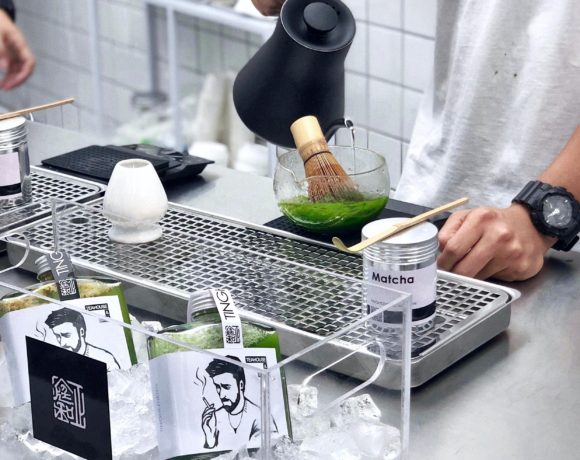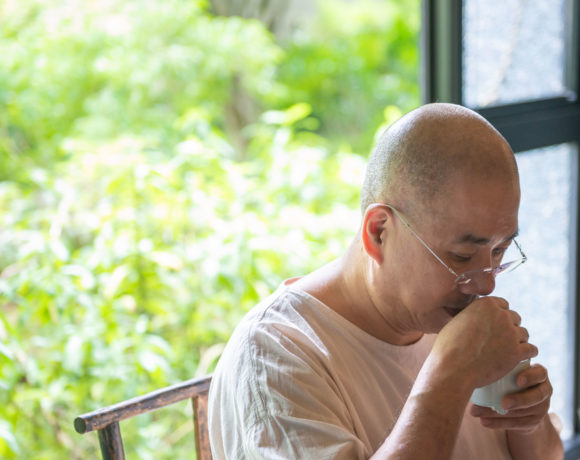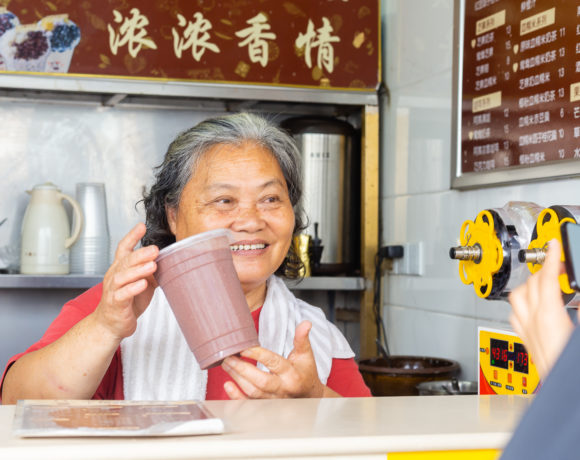
When we talk about tea, the specific image coming to our mind is the cultural drink popular in the UK, China and other countries where Chinese culture prevails and Chinese people congregate, such as Japan, South Korea, Malaysia and Singapore. However, the seventh largest tea producer and the fifth tea exporter is barely mentioned: Vietnam.
In Vietnamese history, tea was once a symbol of aristocracy and it has become a major agricultural export since the 1990s, proud of its high quality matching that of Taiwan tea. However, green tea from Vietnam rarely resonates with the world outside Asia.
The predicament is caused by the elder age of tea drinkers in Vietnam and mainly exacerbated by the lack of tea culture. As most of the Vietnamese drink tea in the simplest way by pouring water and tea leaves in a pot or a cup, the stereotype that tea culture is others’ business is further entrenched.
Luckily, we meet Dear TeaHouse. Founded by a group of young Vietnamese from a creative industry, the teahouse plants a flag of tea and depicts a lovely lifestyle with domestic culture and beautiful design.
A Precursor: The First Modern Teahouse in Vietnam
“We travel a lot, go around Asia, and find that each country has many ways to keep their traditional tea alive in the modern life. We ask ourselves why we don’t create a space to bring traditional tea to young people and make them love tea again.” This passion brought together Aimee Thai, creative director & co-founder of Maki Studio, Marc Tran, photographer & co-founder of Maki Studio, and Danh Le, an art director. Their belief that “a healthy drink shouldn’t be forgotten among bubble tea and milk tea in the market” is now translated into Dear TeaHouse.

As they said, brands or stores with modern and brand-new tea drink services can’t be found anywhere, yet specialty coffee shops have mushroomed in Vietnam. This inspired them to revive traditional tea in a way that works for promoting specialty coffee culture, like creating a tranquil “third space” allowing people to escape from the chaos of work and urban life, or offering takeaway products with fresh tastes and exquisite packages.
Curiosity: Enticing The Young
Young Vietnamese or the so-called Gen Z are the targeted customers of Dear TeaHouse. To them, traditional tea drinks like Thai Nguyen Green Tea and White Tea bring a fresh and curious experience, as they have never had a try.
“Most of Gen Z are first jobbers and students, trendy and passionate about socialization. We choose and focus on three kinds of their styles: officer, trendy (fashionable) and simple.” The officers and simple people will form an army of customers for modern teahouses, and trendy consumers can bring Dear TeaHouse to social media directly and fast.

The menu is carefully designed to fit with young people’s tastes. Mild, lightly sweet and balancing tea are preferred choices; Special cold brew drinks, such as Lotus Leaf cold brew tea and Rose Pu’erh cold brew tea, are offered in hot days and have become best sellers.
As defined by the founders, Dear TeaHouse is a creative lifestyle that is caring, graceful and humble, and also a creative space where people are kind, considerate and things are thoughtfully created. They invite young people to join their journey and inspire each other with inner beauty and moderate, humble behaviors.


Art Concepts: New Interpretations of Domestic Culture
Notably, Dear TeaHouse embraces a new art concept every season. With white as the main space color, accompanied with pine and oak furniture and tidy terrazzo floor, “the space is designed as a blank paper which can be changed by art installations every season”. Since September 2019, the teahouse has formed a firm alliance with new artists, and has designed art concepts to celebrate Chinese New Year, Christmas and other traditional festivals. Particularly, they have designed special concepts like Hanami, an interactive exhibition taking cues from Japanese ancient flower viewing ritual, and Thank You Heroes when the COVID-19 pandemic became less severe to express gratitude to medical practitioners.
Among all the concepts, Mekong is their favorite one. Inspired by the culturally-rich Mekong Delta, Dear TeaHouse cooperated with Ecolotus, the first Vietnamese company that pioneers in preserving the lotus using technology and environmentally friendly materials, and created an immersive installation-art experience crafted with innovative use of dried lotus flowers and leaves. With the help of Saigon-based Dem Trang Studio and its artists, an upside-down “lotus pond” rose in the central area of the teahouse. During the exhibition, over 250 lotus-related products were wrapped in gold to create a warm and cozy atmosphere. Accompanying this were four signature teas selected for their artisanal, fragrant, and health-nourishment quality that delivered the authentic flavor of Vietnam. The exhibition drew more than 2,000 visitors and consumers over the course of three months.

“Being born in the Mekong Delta region, we want to host this unique immersive experience as a special way to pay tribute to our motherland, which nourishes and sustains us all from birth till today.” Meanwhile, their partners at Ariyasa want to raise public awareness of how the beauty of the Mekong is being silently and gradually destroyed due to low rainfall, overexploitation of tributaries, and especially hydroelectric dams built in the upper reach blocking water from flowing into reservoirs. They expressed the message that something should be done.
The recent concept is “Briefly Gorgeous”, as a celebration of their second anniversary. In partnership with Selab, a flower and vase studio, they create a brand-new art installation with 250 paper tea boxes, dried flowers and 12 paper lights. They also invited the content creator Nam Thi to write a special poem on the wall to grace this concept.

Q: Personally, how do you think about contemporary teahouse?
A: In Asia, teahouses are typically striking examples of traditional architecture, reflecting the culture and history of the nations in which they’re built. Contemporary architects have approached the challenge of modern teahouse design with an eye toward tradition. However, Tea is an experience, not just a drink. It’s all about how you feel. Traditional tea or specialty tea has its own experience and feeling. The problem is who you are and what would you choose.
Q: What do you think about the cultural environment and future of specialty tea in Vietnam?
A: In Vietnam, the centuries-old tradition, the interference, and the future tea trends are uniquely combined. Although the high-quality tea market remains relatively small, there are encouraging signs that it is growing. We believe in young Vietnamese, who are responsible for preserving the culture. It may well be a slow process but we’re confident that the positive developments seen over recent years in increasing the awareness of high-quality Vietnamese tea can continue.












NO COMMENT